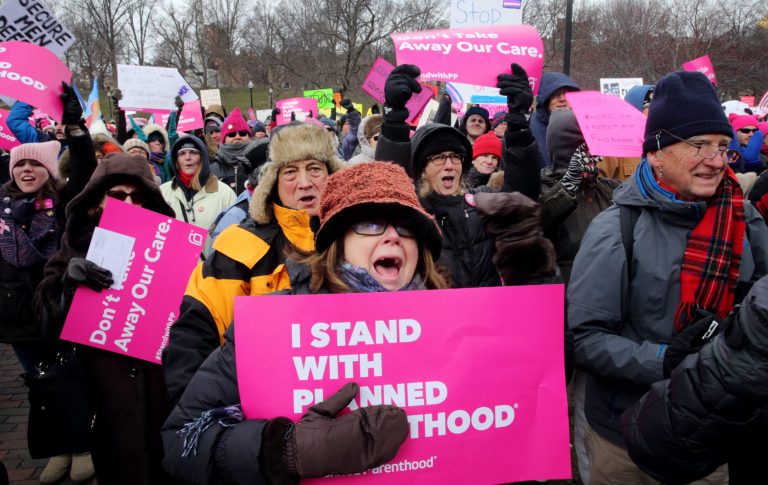What happened on Tuesday was not, by any measure, terribly shocking. The ambitious red wave was a much more realistic red ripple; Republicans will win the House while the Senate will likely be split; the narrow races are yet to be decided (this is apparently now the norm in American politics, vindicating an election prediction from 2020); and once again, the first Tuesday in November marked a slight shift, rather than an about-face, from the condition of electoral politics the year prior.
But while the electoral results will apparently take days—weeks, even, in the case of Georgia—there was one question on the ballot that has already been clearly decided. Abortion, and all its sundry offshoots, will retain protected status in the United States.
Five key ballot proposals on abortion were decided Tuesday night. California, Vermont, Montana, Kentucky, and Michigan all weighed in favor of fewer limits on abortion, with even red Kentucky knocking down a proposal to specify that the state constitution does not protect a right to abortion. Montana narrowly declined to recognize the rights, including the right to medical care, of a child born from a partial or botched abortion. Vermont’s Prop. 5 made it the first state in the Union to enshrine a fundamental right to an abortion in its state constitution, beating California only by a few hours. The constitution of the state of California, too, will now read that “the state shall not deny or interfere with an individual’s reproductive freedom…which includes their fundamental right to choose to have an abortion.” But Michigan’s proposal may just be the most extreme.
Proposal 3, as previously reported, goes beyond enshrining a right to abortion in the state constitution, though it certainly does that. In addition to establishing rights to all manner of “reproductive freedom,” including sterilization, the bill also does away with parental consent for minors in any such reproductive decisions. That opens the door to some very bleak possibilities, like the underage rape victim being coerced to abort her baby to provide cover for her abuser; or the teenaged, gender-confused girl being given hormone therapy behind her parents’ backs, at the permanent cost of her fertility. The proposal was passed by a margin of 13 percentage points at the time of this writing, and would require three-fourths of both chambers of the Michigan state legislature, which just flipped blue, to vote to overturn it. Or, of course, another ballot proposal. Or a federal abortion ban.
Earlier this week, the Los Angeles Times published a piece describing the Michigan proposal and how it was shaping the gubernatorial contest between Gretchen Whitmer and Tudor Dixon. (I made a similar observation a few weeks back.) The Times’ opening interviewee, a woman whose yard was pockmarked with campaign signs for Republican names all the way down the ballot, told the reporter she would vote in favor of Prop. 3, despite her Republican bona fides, because “I’m my own person.”
Clearly, she was not alone. More people, about 100,000 more, voted for the losing Republican candidate, Dixon, than against the proposal. Even more telling were the results in Kentucky, which spans both the Rust Belt and the Bible Belt, and where the measure to restrict abortion failed by 6 percentage points. This is the same state that went for Trump by 62 percent to Biden’s 36 percent in 2020. In many ways, places like Kentucky are the heart of the new right and its voter base—they produced J.D. Vance, after all. But we should not misunderstand what this means.
As commentator Aaron Renn pointed out in his newsletter on Wednesday, the majority of the voting public seems to want abortion to be legal. This is especially true for working class Americans, who comprise a large swath of voters in both Michigan and Kentucky. I am not the first to point out, of course, how many of these blue collar Democrats now vote Republican—in part due to Trump, but also as a result of the leftward shift of the Democratic Party. The voters haven’t moved much, but the parties have.
That means Republicans who prioritize working class concerns are winning again (see: Vance), but it also means that the Evangelical vote, which has never been as significant as folks want to believe, is less relevant than ever. Many Evangelicals have gone left in recent decades, perceiving empathy in the progressive agenda. Those who have stuck with the right often tend to emphasize genuine, if secondary, political concerns (election fraud, Covid policies, critical race theory) over religious ones (the sanctity of life).
Subscribe Today
Get weekly emails in your inbox
It used to be that you could not run in a red state without being loudly opposed to abortion, because they were so reliably pro-life. This is still true in some states, such as my home state of Tennessee. But for many of the winning Republicans on Tuesday, opposition to abortion was not the deciding factor. In some cases, it may even have been a hindrance. Meanwhile, the libertarian tendency of the working class voter led him to prefer fewer restrictions on abortion, purely for the sake of keeping the government out of as much of his personal life as possible—the state is for roads, healthcare, jobs, not morality.
Republicans have secured the working class vote, but it is not the culturally Christian one. The waning influence of the pro-life movement in the Republican party is evidence of this: success at the judicial level seems to have coincided rather ironically with the failure of the popular movement. This may be the fault of the movement’s organizers, or it may just be a reflection on much broader cultural changes in America, tectonic shifts that no organization could have reasonably stopped.
But the culture war without Christianity is a rudderless ship. The success of politicians like Ron DeSantis in Florida means little if in the same breath the American people have said they will abide infanticide, or would rather keep their options open than commit to protecting innocent lives. The Supreme Court overturned Roe v. Wade to send the decision on life back to the states, and the states chose death.








